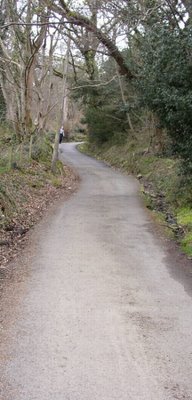
‘Do you have a shredder?’ a friend asked me recently. She told me that she had heard it was important not to throw away important papers intact – because the unscrupulous can use them to access your bank account. I have to admit that I thought this was taking things too far – but having read Andrew Holmes’s book
64 CLARKE I am not so sure.
Ransacking bin bags for important documents is the occupation of one of the more law-abiding characters in the book. Max lives in the ground floor flat at 64 Clarke Street. He is 38 and finding life unbearable for many reasons: he has been falsely accused and stigmatised for a crime with a minor; he is in thrall to a man called Chick and he has the misfortune to live below a young couple called Dash and Sophie who have laminated flooring, an addiction to late-night television and are inconsiderate in the extreme. This background of noise and disturbance and the effect it has on Max is one of the very effective repeated motifs in the book.
However Dash and Sophie have their own problems. Sophie is an ambitious dogsbody in the offices of a fashionable magazine who has found that having a boyfriend with a dubious occupation gives her a little street credibility; at least in the eyes of the editorial staff. Dash himself is a seller of loudspeakers from a white van – a racket controlled by the ubiquitous Chick. (See
here for Andrew Holmes’s interesting account of the genesis of that particular characteristic).
So both tenants of 64 Clarke Street are connected not just by their common address but by their association with Chick.
Chick is obnoxious and has an equally obnoxious son. The character of his wife, though, is less straightforward. Andrew Holmes has a talent for description:
‘Mrs Chick had arrived. Her hair was blonde, the colour of cornflakes, and dyed in the middle-aged way with the roots showing. She chewed gum. Below hard eyes were shadows of flesh as though she had once been in a fight from which her face had never properly healed. To Dash she looked like she had returned battle-scarred and defeated from the love-wars of her youth…’
which is excellent enough, but then he goes on to add what I now realise is the Andrew Holmes signature – a touch of well-observed humour
‘…She’d imagined herself as Kate Winslet on the prow of the boat, maybe Demi Moore at the potter’s wheel in Ghost, or Julia Roberts taking a bath in Pretty Woman. Yet at some point the urge to meet, mate and procreate had become so overwhelming that she had allowed her dreams of Richard Gere and Patrick Swayze to become the nightmare of Chick, a man who openly scratched his testicles, and then sniffed his fingers (base notes of tobacco, heady top notes of bollock sweat); a man who, that night and despite her protestations, had insisted she show the boys her birthday present.’
Ha, a good place to end that quote, I think. I shall just say that the birthday present is pretty funny - another repeated motif used to good effect.

Apart from this excellent line-up of characters there is, of course a plot. I would guess that Andrew Holmes is a plot-driven writer, rather than a character-driven one, because I think the plot is the main feature of the book. It is this plot (as well as the quality of the writing) that ensures the book is an exciting page-turner. I suppose if I were to categorise it I would call it an example of high-quality crime-fiction. The crime is the disappearance of a six-year old boy called Ben Snape. He disappears from a crowded London tube platform after being separated from his father – and the connection between the characters at 64 Clarke Street and mystery of what has happened to Ben is the meat of the book. The ending is satisfying – and I know this is said so much it is a bit of a cliché – but it would make an excellent thriller on the TV – much, much better than the insipid, confusion-serving-instead-of-plot stuff served up in some recent crime dramas.
These main characters are supported by a good cast of minor characters. There is Lightweight, Dash’s driver, Milne, the policeman in charge of the case, Max’s sister (the relationship between these two very sensitively portrayed), Ben Snape’s parents and Ben himself, and even Dash’s ex-driver, Warren and his girlfriend, LaDonna. Each one memorably and humorously described:
‘LaDonna, not a woman to whom restraint came easily, had been unstinting in her contempt for Warren’s pecuniary woe. Like Sophie she ascribed to the R&B-sponsored theory that jewellery, clothes and sundry beauty treatments should be subsidised by the person for whom they were intended. ‘How ‘m I expected to pay for all this ? she’d asked, sweeping sharp expensive hands up and down herself. (‘Get a refund,’ replied Warren – it wasn’t a night the neighbours were likely to forget in a hurry.)’
The writing has been compared with Martin Amis, but for me it also smacks of the wit of Amis senior – in the dialogue and action as well as the characterisation:
‘Lightweight gurgled a second time, trying to say something to the nurse , who bent to hear him make some moist noises. His finger came up like E.T.’s pointing downwards to wards Dash, who was dancing nervously.
‘He says you’re a dead man,’ repeated the nurse to Dash , then, ‘Sorry, no…’ She put her ear back to Lightweight. More wet sounds. ‘You’re a fucking dead man.’ She looked accusingly at Dash . ‘Now do you want to tell me what’s going on?’
It is a fine book – so highly entertaining, absorbing and very well-written that despite the F-word I am sure that even
Mr Lawrence would thoroughly approve.














































